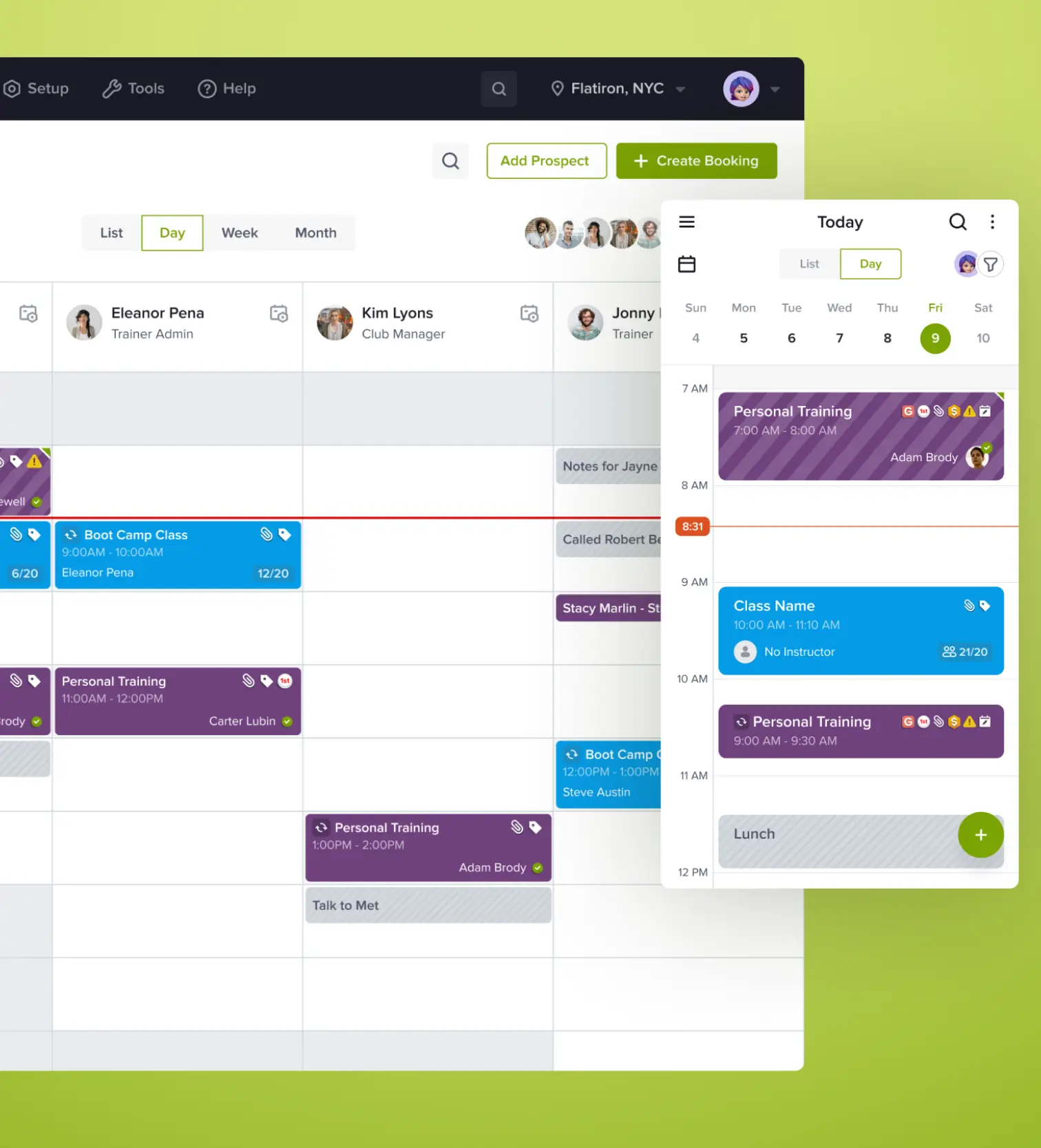Why calculate customer lifetime value in SaaS?
Because one number can tell you how much a single customer is worth — and whether your business model actually works.
Customer lifetime value (or SaaS LTV) connects your revenue, customer retention, and acquisition costs. Get it right, and you’ll know how much to spend to acquire a new customer, which customer segments bring the most value, and how to scale sustainably.
In this article, we’ll break down the most common LTV formulas, when to use each, and how to increase the lifetime value of a customer over time.

Why bother calculating LTV for SaaS?
There’s no single formula for calculating lifetime value that works for every SaaS company. Your pricing model, customer base, and growth stage all shape the way to calculate it. It's not about a formula that right or wrong, it's about sticking to the one that gives the most insight into your business health.
Below are four common approaches to customer lifetime value calculation — from simple equations to data-heavy models. Each one offers a different lens on how much value a customer is expected to generate over time. In other words, LTV is among the most important SaaS UX metrics.
How to calculate LTV
There are four typical ways to do just that.
1. Simple LTV = ARPU × Customer Lifetime
Formula:
LTV = Average Revenue Per User (ARPU) × Customer Lifetime
This is the most straightforward LTV formula. You multiply the average revenue per customer by how long the average customer remains subscribed.
Why use it:
- Fast and easy to calculate
- Works when you don’t have deep data on different customer segments
- Gives you a basic sense of how much revenue a customer generates
Limitations:
- Ignores margins, churn type, and upsells
- Doesn’t reflect different customer groups or product tiers
- Not ideal if your customer base has high variability
Best for:
Early-stage SaaS products with simple pricing and steady customer retention rates. Think utility apps or lightweight B2C tools where each new customer follows a predictable path.
{{case-study}}
2. Gross Margin LTV = (ARPU × Gross Margin) ÷ Churn Rate
Formula:
LTV = (Average Revenue Per Customer × Gross Margin) ÷ Customer Churn Rate
This lifetime value formula adds more realism by factoring in how much of the revenue a customer generates actually contributes to profit. It tells you how much value each customer is expected to generate — after accounting for the cost of service delivery.
Why use it:
- Gives a more accurate view of customer value
- Helps align customer acquisition strategy with profitability
- Useful for benchmarking unit economics across different customer groups
Limitations:
- Gives a more accurate view of customer value
- Can fluctuate if churn is inconsistent across customer segments
Best for:
SaaS companies with known infrastructure costs and established customer support operations. Especially relevant for B2B tools where customer relationships are longer and costlier to maintain.
3. Cohort-Based LTV
Method:
Track the revenue a customer generates over time by grouping users into cohorts (e.g. by signup month) and measuring how much value each group delivers across their customer lifetime.
Instead of estimating, you calculate customer lifetime value based on what actually happened — not what you assume.
Why use it:
- Captures behavior across different customer segments
- Highlights the impact of onboarding, pricing, or retention strategies
- Reflects real customer engagement and customer retention rates
Limitations:
- Needs enough user history and volume to be meaningful
- Requires good tracking and analytics infrastructure
Best for:
Growth-stage SaaS companies that want to improve customer lifetime value by deeply understanding how customer value varies across time and experience. Perfect for products where LTV by customer can vary widely.
4. Predictive LTV (Machine Learning Models)
Method:
Uses machine learning to calculate how much revenue over the customer’s lifetime is likely based on usage patterns, support interactions, and behavioral data. In other words, lifetime value can be predicted before the full customer’s lifetime plays out.
The formula looks like a black box at first but the goal is clear: estimate customer lifetime value as accurately as possible using real-time signals.
Why use it:
- Helps forecast customer loyalty and churn
- Ideal for tracking customer lifetime value at scale
- Can account for upsells, engagement, and plan upgrades
- Lets SaaS companies spot customers with a high LTV early
Limitations:
- Requires data science and clean historical data
- Risk of overfitting or misinterpreting model outputs
Best for:
Large-scale or B2B SaaS platforms with variable pricing, long customer lifetimes, and access to user-level behavioral data. The better your inputs, the higher customer lifetime value you can uncover, and the better you can understand the value of your user base.
Let's summarize all formulas in an infographic below.

What’s a Good LTV in SaaS?
There’s no universal benchmark. But there are clear signals that you’re on the right track.
- A good LTV exceeds CAC by at least 3x
The relationship between the lifetime value and the cost of acquiring that customer is a key signal of health. If your customer lifetime value isn’t at least 3x your CAC, you’re likely spending too much on customer acquisition. - LTV depends on pricing and customer type
SaaS companies often see higher LTVs in B2B SaaS (due to high ACVs and long contracts) and lower ones in B2C or SMB markets where volume makes up for lower per-user value. - High LTV means high retention
The longer a customer stays, the more value of money they provide. High retention directly drives higher lifetime value. - Gross margins matter
Don’t just look at top-line revenue. Customer’s lifetime value should be based on profit, not just what a customer spends. - Expansion boosts LTV
Upsells and cross-sells grow the total revenue a customer brings over time — especially important in SaaS business models with usage-based pricing or tiered plans. - Lifecycle length affects what’s “good”
Products with short natural cycles (e.g. event-based tools) may have lower LTV and that’s okay, as long as CAC stays low too. - Higher LTV enables faster growth
The higher customer lifetime value you achieve, the more confidently you can acquire a customer and reinvest in growth.
Important SaaS Metrics for Better Context
LTV to CAC Ratio
One of the most important metrics in any SaaS business is the ratio between customer lifetime value and the cost of acquiring that customer (CAC).
A healthy benchmark is LTV:CAC = 3:1
This means your customer’s lifetime value should be at least three times higher than what you spend to acquire a customer.
Below 3:1? You’re spending too much on customer acquisition, or not retaining users long enough.
Above 5:1? You may have room to grow faster — possibly under-investing in acquisition or marketing.
The relationship between the lifetime value and CAC helps determine how scalable and sustainable your growth really is, and whether your SaaS company’s unit economics can support aggressive expansion.
How to increase customer lifetime value
Improving customer lifetime value isn’t about one tactic — it’s about compounding value over the customer’s lifetime. The goal is to keep each customer spending longer, and ideally, spending more.
Here are key strategies to improve the LTV:
1. Reduce Churn
- Spot drop-off early using usage data
- Use exit surveys and NPS to understand why customers leave
- Offer flexible plans or targeted incentives to keep the average customer longer
- Strong customer loyalty leads to higher customer lifetime value
2. Increase Revenue per Customer
- Add upsells, add-ons, or tiered pricing
- Use value-based packaging to align price with outcomes
- Promote annual billing for higher value of money and retention
- This grows the total revenue a customer brings in over time
3. Improve Onboarding
- Help new users reach value fast. In other words, make sure to fast-track users towards an aha moment.
- Use walkthroughs, tooltips, or onboarding specialists
- A strong start increases the chance a customer stays and lifetime value may rise
4. Invest in Support and Experience
- Fast, human-centric customer support drives retention
- Build feedback loops that show customers they’re heard
- Community and self-service options increase engagement
- The more engaged the user, the higher their customer lifetime value
Bottom line
Customer lifetime value isn’t just a financial metric — it’s a mirror of your product, pricing, retention, and customer experience.
For any SaaS business, learning how to calculate customer lifetime value means understanding what a customer is worth, how long the average customer provides value, and whether your growth is truly sustainable.
Whether you use a simple LTV formula or advanced predictive models, tracking and improving SaaS LTV helps you make better decisions — from how you acquire a customer to how you retain one.
If you're serious about growth, few things matter more than maximizing the value of customers over time.
ClubReady, a leading fitness SaaS provider, partnered with our design team to redesign their mobile app and web-based software.

Frequently Asked Questions
Heading 1
Heading 2
Heading 3
Heading 4
Heading 5
Heading 6
Lorem ipsum dolor sit amet, consectetur adipiscing elit, sed do eiusmod tempor incididunt ut labore et dolore magna aliqua. Ut enim ad minim veniam, quis nostrud exercitation ullamco laboris nisi ut aliquip ex ea commodo consequat. Duis aute irure dolor in reprehenderit in voluptate velit esse cillum dolore eu fugiat nulla pariatur.
Block quote
Ordered list
- Item 1
- Item 2
- Item 3
Unordered list
- Item A
- Item B
- Item C
Bold text
Emphasis
Superscript
Subscript


